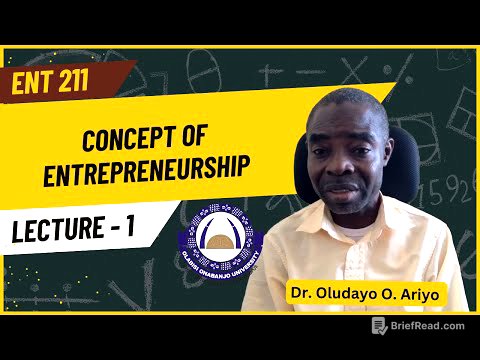TLDR;
This video provides practical strategies for parents to foster independence in their children while maintaining a strong emotional connection. It emphasizes that true independence is not detachment but growth, supported by a secure attachment to parents. The video covers redefining independence, allowing children to struggle, building decision-making skills, maintaining emotional connection, and teaching life skills.
- Independence is about growth, not detachment.
- Allowing children to struggle builds resilience.
- Emotional connection is crucial for secure independence.
- Teaching life skills fosters confidence.
Redefining Independence [0:52]
Independence is often mistaken for rebellion or detachment, but it's actually about growth. A truly independent child feels secure enough to explore and make decisions, knowing their parents are a safe base. This concept aligns with the secure attachment theory, where children feel free to explore because they trust their caregiver's support. Parents can reinforce this by using "safe base language," assuring their children of their support while encouraging autonomy.
The Power of Allowing Struggle [1:43]
Over-rescuing children hinders their growth. Resilience is built through overcoming small failures. Parents should practice supportive non-intervention, pausing before rushing to help and instead asking the child for their own solutions. The scaffold method is useful, where support is gradually reduced as the child's competence increases.
Building Decision-Making Muscles [2:38]
Independence requires practice in making decisions. Children who are never allowed to choose become adults who struggle to lead. Parents should introduce controlled choices early, such as selecting clothes or deciding when to do homework. Allowing natural consequences, like experiencing the effects of forgotten homework or staying up too late, can be a powerful teaching tool.
Emotional Connection is the Anchor [3:21]
Maintaining emotional intimacy is crucial as children become more independent. Relational presence, being fully engaged when spending time with children, is key. Active listening, putting away distractions, and reflecting on what they say can strengthen the bond. Creating connection rituals, like regular talks or shared activities, helps children feel seen and emotionally secure, reducing the fear of abandonment as they gain independence.
Teaching Life Skills [4:07]
Early independence is both emotional and functional. Children gain confidence by mastering real-world skills. Parents should introduce age-appropriate responsibilities, such as dressing themselves (ages 3-5), preparing simple meals (ages 6-9), managing allowance (ages 10-13), and budgeting (ages 14+). The teach, model, practice, release method is effective: teach the skill, model it, practice together, and then release responsibility to the child.









